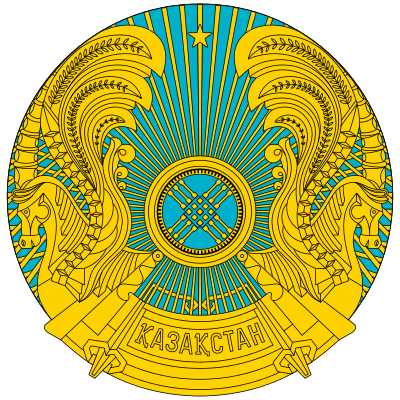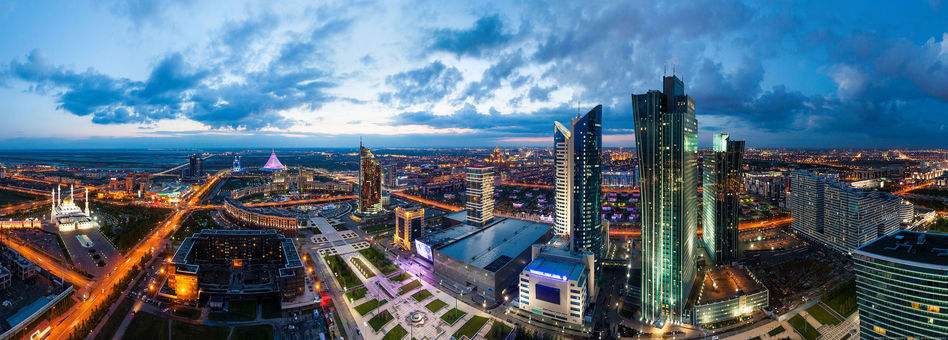

Kazakhstan , officially the Republic of Kazakhstan (Kazakh: Қазақстан Республикасы, tr. Qazaqstan Respwblïkası; Russian: Республика Казахстан, tr. Respublika Kazakhstan), is a transcontinental country in northern Central Asia and Eastern Europe. Kazakhstan is the world's largest landlocked country, and the ninth largest in the world, with an area of 2,724,900 square kilometres (1,052,100 sq mi).Kazakhstan is the dominant nation of Central Asia economically, generating 60% of the region's GDP, primarily through its oil/gas industry. It also has vast mineral resources.
Kazakhstan is officially a democratic, secular, unitary, constitutional republic with a diverse cultural heritage. Kazakhstan shares borders with Russia, China, Kyrgyzstan, Uzbekistan, and Turkmenistan, and also adjoins a large part of the Caspian Sea. The terrain of Kazakhstan includes flatlands, steppe, taiga, rock canyons, hills, deltas, snow-capped mountains, and deserts. Kazakhstan has an estimated 18 million people as of 2014, Given its large land area, its population density is among the lowest, at less than 6 people per square kilometre (15 people per sq. mi.). The capital is Astana, where it was moved in 1997 from Almaty, the country's largest city.
The territory of Kazakhstan has historically been inhabited by nomadic tribes. This changed in the 13th century, when Genghis Khan occupied the country as part of the Mongolian Empire. Following internal struggles among the conquerors, power eventually reverted to the nomads. By the 16th century, the Kazakh emerged as a distinct group, divided into three jüz (ancestor branches occupying specific territories). The Russians began advancing into the Kazakh steppe in the 18th century, and by the mid-19th century, they nominally ruled all of Kazakhstan as part of the Russian Empire. Following the 1917 Russian Revolution, and subsequent civil war, the territory of Kazakhstan was reorganised several times. In 1936, it was made the Kazakh Soviet Socialist Republic, part of the Soviet Union.
